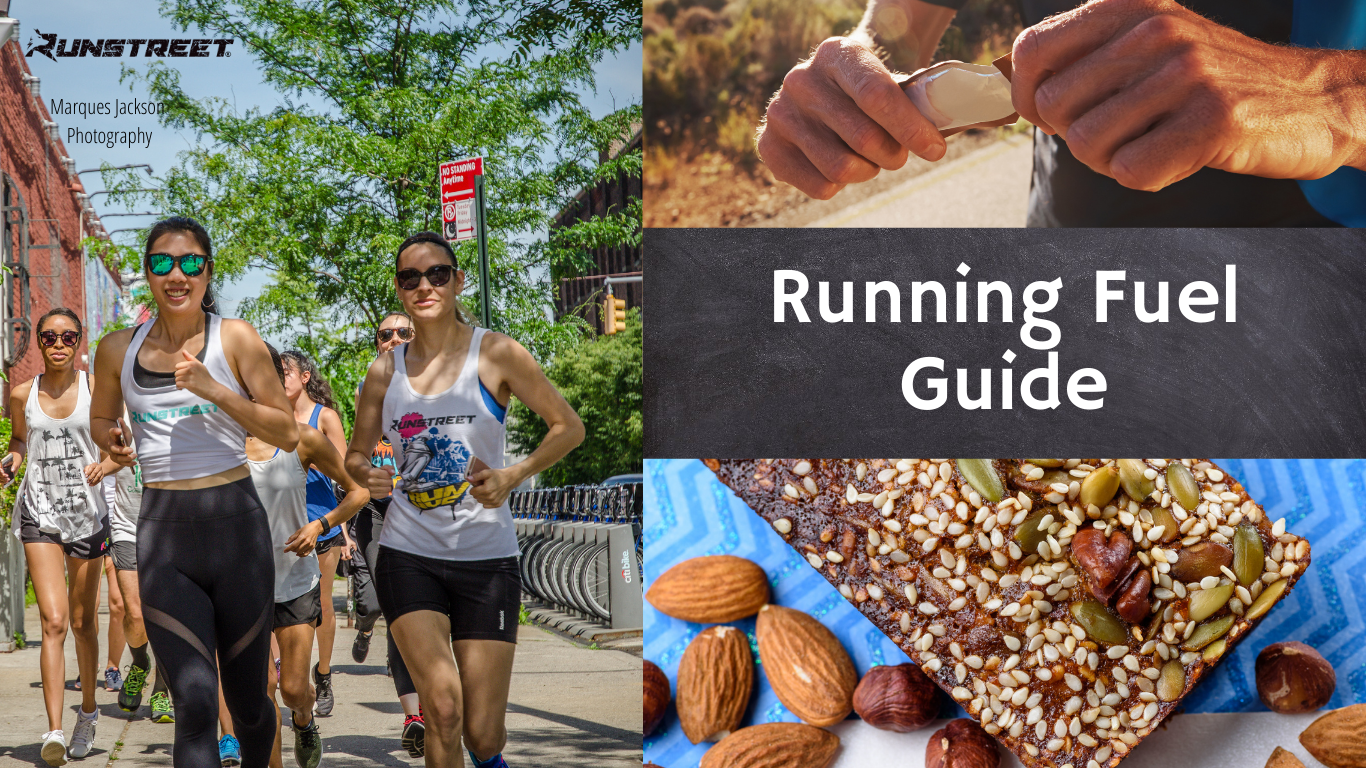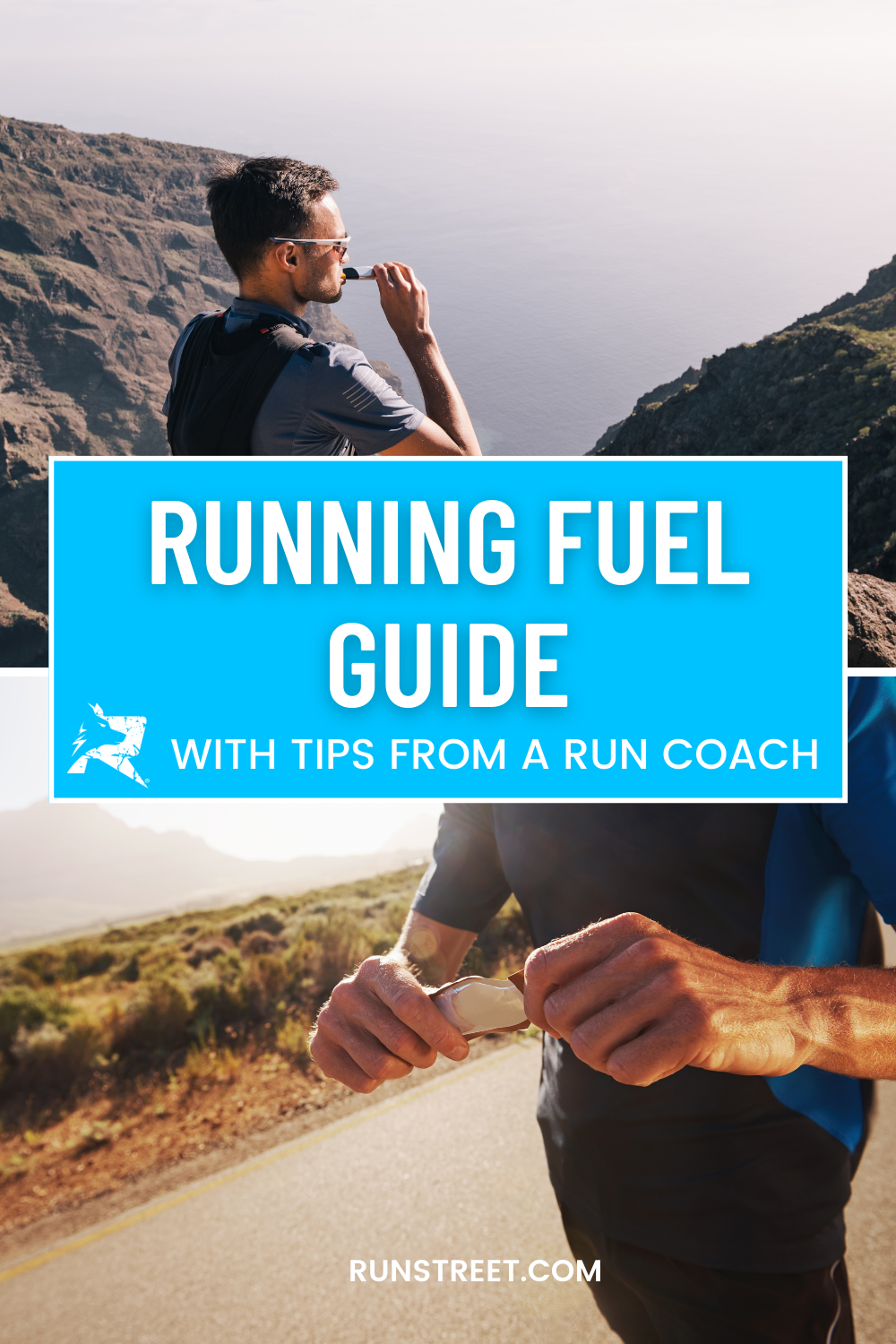Running Fuel Guide to Help You Run Better
By Marissa Del Mistro
Finding the best running fuel can be overwhelming, but I’ll break it down for you here so you can find the best option for you. Energy gels, bars, and chews go together with runners like socks and shoes! Energy products are optimized to be easily digested, bursting with carbohydrates sources, natural sugars from fruit and honey, and simple sugars. They are useful for maintaining consistent energy levels while helping sports performance.
As we determined in our blog, Nutrition for Runners Guide from a Dietician, we really are what we eat, and we should be conscious about what snacks we munch for running fuel and to energize ourselves. If you haven’t tried them, let's chew on which energy snack is the best for you.
Why Use Running Fuel?
Energy gels are designed to help fuel your run. They come in various shapes, sizes, and forms but there are three main types — energy gels, isotonic gels, and energy bars. Running, especially long runs, demand a lot of energy from your body, which comes, mainly, from carbohydrates.
Your body stores glycogen from carbs to burn for fuel during your long runs, and after 60 to 75 minutes of running, your glycogen stores will be depleted. This is why it’s essential to take running fuel during long runs and long races like half marathons and marathons.
Energy Gels for Runners
As energy gels usually contain between 20-30 grams of carbs, you can see why they’re a great option for running fuel. Many gels are made with electrolytes as an important salt replenishment (especially important for people who sweat a lot) and some have caffeine for an added energy boost. Energy gels pack a carbohydrate punch. These are stickier and most people like to have water to help wash them down. They are super light and easy to carry. When you’re on a long run, you should stop to take them.
Isotonic Gels for Runners
Isotonic gels, while a little bulkier, come already mixed with water so they are in fluid form, making them easy to pack for a run. As they have water in them, most runners use them to hydrate rather than also carry a water bottle – but this is not advisable, as it's usually enough water just for the gel – so be sure to have H2O on long runs too. If you have incredible coordination (not me), you can take them during your run, but it’s probably wise to at least slow down to take them.
Energy Bars for Running Fuel
Then there are energy bars, which, in my opinion, are a lot tastier than the other two. However, somewhere along the way they’ve gotten a bad name for their high fat and sugar content. This would be a concern if you were reaching for them without the run, but when running long distances, they are convenient and pack a nutrient punch – especially if you opt for the ones full of nuts and berries - and energy, plus we need sugar and carbs to refuel.
For exercise under one hour, it’s unlikely you will need extra carbohydrates because your body should be sufficient. It is suggested to take energy gels and bars for longer sessions to help maintain your energy and performance.
When to Take Running Fuel
In general, if you are running for over an hour, you will need some running fuel. For half marathon and marathon training, take energy chews or gels for your long runs. This is a good time to experiment with different flavors and types until you find the best fuel for you.
Depending on what time of the day you hit the pavement, you’re eating schedules matters to avoid nausea and cramps mid-run. The exact timing of when to eat will vary from person to person, but 1.5 hours before a long run is a safe bet. Check out our post on What to Eat Before a Long Run for more ideas of what to eat and when to eat it before going on long runs.
Throughout your long run, most running fuels recommend taking them every 45 minutes to an hour. Check out the directions on your fuel of choice and experiment during training to see what exact schedule works best for you.
Which Gels Are Best for Runners?
Where do you even start with finding a gel for you? Finding the perfect gel often takes time to find something that agrees with you, especially if you have a sensitive stomach. Lots of studies tell us that plenty of long-distance runners suffer from gastro issues, so I will discuss the best options for people living with GI issues. I’ll also touch on some gels that are low in fructose and some that do not contain lactose for all you vegans out there.
At the end of th day, it’s best to experiment with different fuels until you find one that agrees with your stomach and works well for you.
Here are some options:
Honey Stingers has organic and gluten-free energy chews and waffles. These are a favorite of Coach Marnie as they are generally easy on the stomach and tasty with natural flavors.
SIS Energy Gels/Bars: A pretty well-known brand, SIS Energy Gels, and Bars has carved out an area in the sports nutrition market for good reason. The majority of their gels have at least 40 grams of carbs per pack and come in a variety of flavors, including their popular caffeinated version for an added push of energy.
Precision Hydration: Do one thing and do it well – that is exactly what Precision does as they only have one flavor of energy gel that is a mild, neutral flavor for people who prefer that. They are the best to have with some water and have a 2:1 ratio of glucose to fructose to help the absorption of the carbs. The packs are surprisingly small, which is very helpful, too.
Gatorade Energy chews: Arguably the most famous sports drink manufacturer has done it again – this time in the form of energy chews. Designed for long-term training, these tasty chews have 31 grams of carbs, 20% vitamin b6, and 110 mg of sodium with a total of 120 calories. They come in refreshing orange and fruit punch (red or orange if you are a fan of their drinks!).
Vala Energy Gels: Powered by plants, Vala hit the market in 2020 but has quickly made a name for itself by impressing runners. Vala values a holistic approach to exercise, believing in the importance of mental, physical, spiritual, and gut health. Their gel packs are completely natural, full of ingredients that picky, vegan, and/or health-conscious runners will be happy to chew on. They offer a thicker texture due to the chia seeds, but the taste is earthy and sweet, dominated by 100% pure Canadian maple syrup and date paste complemented with pure lemon and lime juice. These gel packs feature 23.8 grams of carbs, 1.05 grams of fiber, and even some protein.
Huma Gel: A top choice for people with GI concerns, Huma Gels are dedicated to energy gels strictly made from natural ingredients. They are comprised of fruit puree, chia, and brown rice syrup – that’s it! With 25 grams of carbs, the chia seeds are to thank for providing steady energy so there is no massive rush or crash. There are plenty of exciting flavors too, depending on your palate preference.
This Bar Saves Lives: Packed into a 180-calorie energy bar, This Bar Saves Lives is gluten-free, non-GMO, kosher, and has 21 grams of carbs, 5 grams of protein, and 4.8 grams of iron. If you have a little bit of a sweet tooth, my recommendation is the Dark Chocolate Sea Salt – delicious (and nutritious.)
R.E.D.D Bars: With an impressive 26 carbs, these vegan bars pack in plenty of fiber, and are gluten-free, packed with plenty of goodies. I have read that they are easy on the stomach (probably thanks to really good ingredients!) Plus, with flavors like sea-salted caramel, what could go wrong?
Stay Energized, Stay Focused
Finding the right running fuel for yourself and your personal needs can be overwhelming at first with the sheer selection but starting with the recommendation above will get you started. Speak to your community of long-distance runners for their recommendations, too. Ultimately, the best energy product is the one you can tolerate and that does its job by giving you the intended energy boost.
Related Posts: Nutrition for Runners Guide from a Dietician, 7 Best Breakfast Foods for Runners
Marissa Del Mistro is a writer, editor, and always on the hunt for the perfect workout. Marissa absolutely loves trail running, dancing, and cycling. When she’s not writing, Marissa loves cooking, podcasts, traveling, and exploring her home in the beautiful unceded Coast Salish Territory of the Lekwungen and W̱SÁNEĆ nations.



